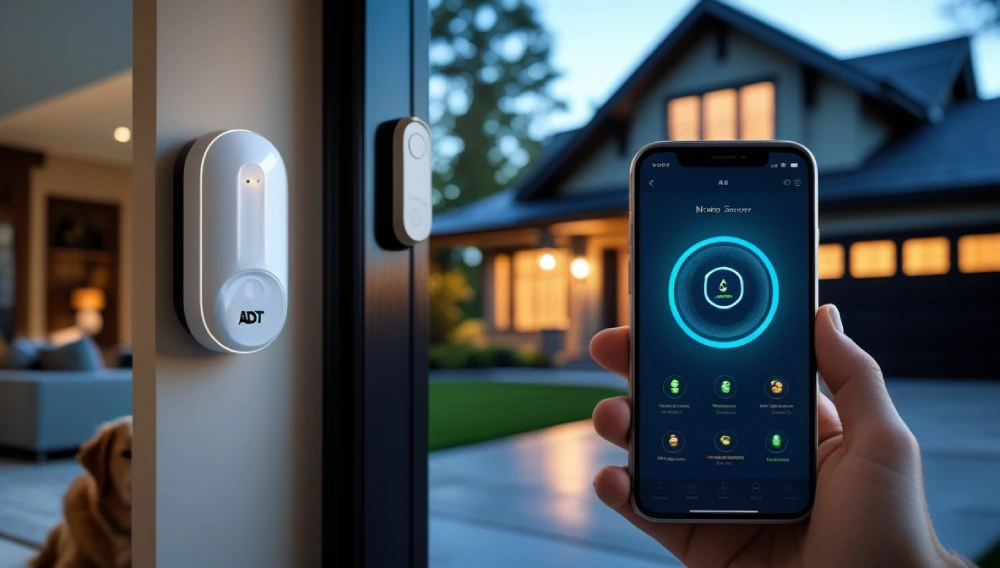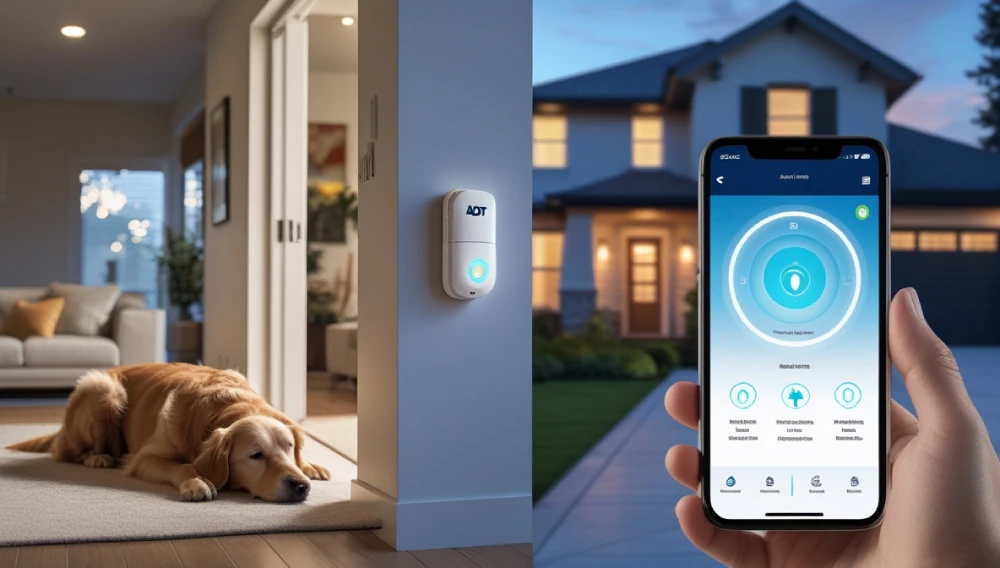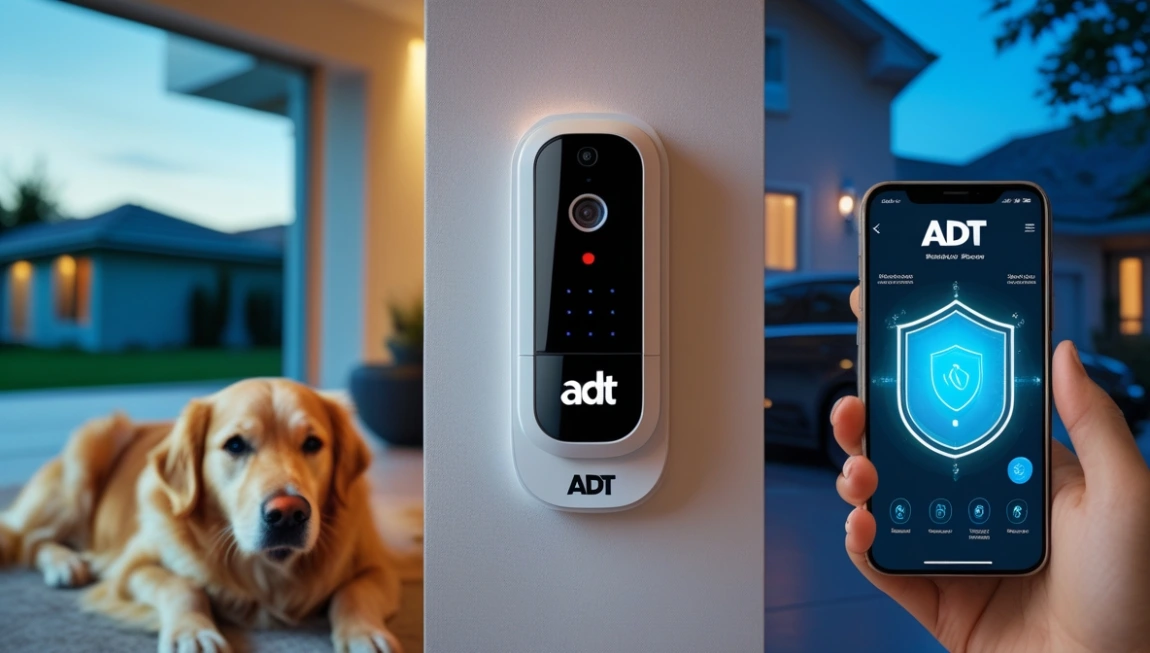Introduction
Feeling anxious about break-ins or wanting to ensure your family’s safety? ADT motion sensors are like the quiet protectors of today’s home security. These clever devices spot intruders, notify you right away, and can even deter burglars with their alarms. Whether you’re a tech guru, just starting out with DIY projects, or someone who really cares about home security, this guide is here to help you understand how ADT motion sensors work. We’re excited to highlight the best models for 2025 and share some simple setup tips. Let’s team up to transform your home into a safer haven today!

What Is an ADT Motion Sensor?
An ADT motion sensor is a handy wireless gadget that picks up on any movement in your home and sends out alerts. It’s an essential component of ADT’s security systems, crafted to catch intruders before they have a chance to make their move.
How It Works:
It uses PIR (Passive Infrared) technology to detect body heat. It sends immediate alerts straight to your phone or to ADT’s monitoring center. Plus, it integrates seamlessly with smart hubs, cameras, and alarms to provide comprehensive security. Fun fact: ADT has been safeguarding homes since 1874!
How Does an ADT Motion Sensor Work?
Imagine it as a vigilant guard dog that can sense heat:
Detects Heat: It can pick up on body heat (like that of humans or pets) from a distance of 30 to 40 feet.
Sends Signals: It communicates with your ADT system through Wi-Fi or cellular networks.
Triggers Action: It can set off alarms, illuminate rooms, or alert the authorities.
Pro Tip: Be sure to keep sensors away from heaters or vents, as they can lead to false alarms!
Types of ADT Motion Sensors
Pick the right one for your needs:
| Type | Best For | Key Feature |
|---|---|---|
| Wireless Indoor | Living rooms, hallways | Easy DIY setup, no wires |
| Pet-Friendly | Homes with cats/dogs | Ignores pets under 80 lbs |
| Outdoor | Driveways, backyards | Weatherproof, night vision |
| Door/Window | Entry points | Detects openings and movement |

Step-by-Step Installation Guide
Tools Needed: Screwdriver, ladder, ADT app.
Pick a Spot: Mount 6–7 feet high, facing entryways.
Secure the Sensor: Use screws or adhesive strips.
Sync with ADT: Open the app, follow prompts, and test!
Pro Tip: Angle sensors away from windows to avoid false alarms from passing cars.
Troubleshooting Common Issues
False Alarms? Lower sensitivity in the app or move the sensor. Not Detecting Motion? Replace batteries (last 1–2 years).
Offline? Check Wi-Fi or cellular signals and reboot the system.
Best ADT Motion Sensors for 2025
1. ADT Wireless Motion Sensor
Price: $45
Pros: Easy setup, works with Alexa.
Cons: Basic design.
Best For: Renters or small apartments.
2. ADT Pet-Friendly Sensor
Price: $60
Pros: Ignores pets, customizable zones.
Cons: Pricier.
Best For: Pet owners.
3. ADT Outdoor Pro Sensor
Price: $85
Pros: Weatherproof, 40-foot range.
Cons: Needs a professional install.
Best For: Large yards.

FAQs
Yes! They detect heat, not light.
Pet-friendly models ignore animals under 80 lbs.
1–2 years. The app warns you when they’re low.
Most wireless models are DIY-friendly in 10 minutes.
Use adhesive strips—no drilling needed!

Conclusion
ADT motion sensors are like invisible bodyguards for your home. Whether you’re a tech guru, just starting out with DIY projects, or someone who really cares about home security, this guide is here to help you understand how ADT motion sensors work. We’ll also spotlight the top models for 2025 and provide some easy setup tips. Together, let’s make your home a safer haven today!
For more tips, explore about AcuRite sensor


Pretty! This has been an incredibly wonderful post. Thank
you for providing these details.
Thank you so much for your lovely comment! 😊 I’m really glad you found the post helpful and enjoyed reading it. Your support means a lot — it truly motivates me to keep sharing more valuable content. Stay tuned for more updates!
I love your blog.. very nice colors & theme. Did you make this website
yourself or did you hire someone to do it for you?
Plz answer back as I’m looking to design my own blog and would like
to know where u got this from. kudos
Thank you so much for your kind words! 😊 I’m really glad you love the blog and its design. I did put a lot of thought into the colors and theme. I actually [customized it myself / worked with a developer / used a template and made some tweaks — choose what fits your case].
If you’re planning to start your own blog, that’s awesome! Feel free to share what kind of blog you’re working on — I’d be happy to share some tips or point you in the right direction. Best of luck
Good day very nice website!! Guy .. Beautiful .. Superb ..
I’ll bookmark your web site and take the feeds also? I’m happy to search out numerous helpful
info here in the put up, we need develop more strategies on this regard, thanks for
sharing. . . . . .